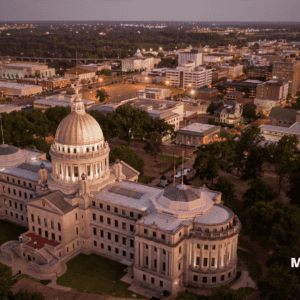State job recoveries continued in April, with two-thirds of states reporting jobs gains on the month according to the Bureau of Labor Statistics. California led states with just over 100,000 jobs recovered in April, continuing a much-needed recovery for a state that remains the most (1.4 million) jobs below pre-pandemic levels. Michigan had a loss of nearly 20,000 jobs on the month, the worst of any state. Meanwhile, Idaho and Utah remain the only states that have recovered to their pre-pandemic payroll jobs levels of January 2020.
States still face lopsided job losses in their leisure and hospitality sector. Leisure and hospitality jobs were hard-hit during the pandemic recession and have only recovered slowly with the removal of government restrictions and the gradual resumption of pre-pandemic dining, travel, and entertainment pursuits.
States that rely on tourism, have heavily urbanized populations, and that enacted deep and prolonged economic restrictions remain farthest behind on the total jobs recovery. Labor market pain will be most prolonged in states that rely on travel and tourism and in states where policymakers scarred their economies with unduly burdensome lockdown policies.
April disappointment
The US economy jobs recovery faltered in April, with only 266,000 jobs gained against expectations of nearly one million, a dramatic underperformance. In addition, the national March jobs number was revised downward from 916,000 to 770,000 jobs. Economists have wrestled with explanations for the underperforming labor market, with some viewing it as a short-term blip while others blame school closures and extraordinary government benefits for the unemployed that both disincentivize work.
Regardless of the reason, weak April jobs numbers were reflected in the states. Only California showed a large gain on the month. And most of the Golden State’s gains came from recovery in the state’s still-beleaguered leisure and hospitality sector, which made up three-fifths of California’s monthly jobs gain.
State recovery gaps remain
The overall recovery picture remains fairly similar month-over-month. Idaho (+1.6%) and Utah (+1.3%) are the only states to have made a full jobs recovery, with South Dakota (-1.5%) and Montana (-1.7%) close behind. Hawaii (-15.1%) and New York (-9.7%) are the worst states for jobs recovery with Nevada (-9.2%) also far below its January 2020 baseline jobs level.
California still has 1.4 million fewer jobs than in January 2020, while New York has nearly one million fewer jobs. Florida (-5.5%), meanwhile, is performing the best out of the tourism-dependent states.
Leisure and hospitality lags
A state’s leisure and hospitality jobs recovery is often the briefest explanation for the state’s overall jobs recovery. The leisure and hospitality sector was most vulnerable to consumers’ pandemic fears and to government restriction orders. Despite making up a relatively small slice of total American jobs market (10%), leisure and hospitality job losses remain an outsized labor market pain point.
Reorienting policy for recovery
Treasury Department guidance for the American Rescue Plan Act (ARPA) leaves a pathway for states to reorient their policies towards growth. States can begin by replenishing their depleted unemployment trust funds and enacting tax reforms, so long as those tax reforms keep revenues above a fiscal year 2019 inflation-adjusted baseline. States can and increasingly do opt out of extended federal unemployment bonus benefits, which extend the generosity and duration of jobless benefits. Under the current federal unemployment bonuses, two out of five unemployed workers receive more pay by staying home than by returning to their jobs.
States can further take responsibility for their recoveries by completing reforms that will fuel an economic recovery. Dozens of states have enacted common-sense tort liability protections to ensure that small businesses and first-responders do not face frivolous lawsuits related to the pandemic. States can also begin to reform their tax codes for growth within the guardrails specified under Treasury’s ARPA rules. Finally, states should continue to focus on cutting red tape in order to ease the cost of doing business and finding a job. Bold state leadership is required to put the current economic crisis in the rearview mirror.



